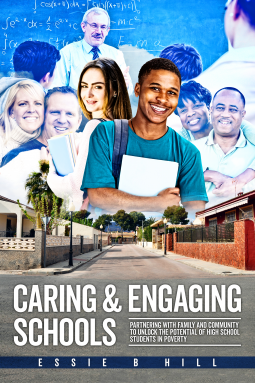
Caring & Engaging Schools
Partnering with Family and Community to Unlock the Potential of High School Students in Poverty
by Essie B. Hill
This title was previously available on NetGalley and is now archived.
Send NetGalley books directly to your Kindle or Kindle app
1
To read on a Kindle or Kindle app, please add kindle@netgalley.com as an approved email address to receive files in your Amazon account. Click here for step-by-step instructions.
2
Also find your Kindle email address within your Amazon account, and enter it here.
Pub Date Jul 01 2018 | Archive Date Nov 26 2018
Talking about this book? Use #CaringEngagingSchools #NetGalley. More hashtag tips!
Description
This book reviews consequences of our failure to effectively address the needs of low-income students, given the poverty-related struggles that impede academic learning, personal growth, and ultimately positive life outcomes. The major stumbling blocks of schooling is portrayed from the perspective of disadvantaged high school youth, who suffer three major losses and deficits, as a result of their struggle: loss of hope for the future, disengagement from schooling, and impaired socioemotional well-being. Their struggles are also described in the context of impaired or neglected relationships among the major stakeholders of public high school education: school, family, and community. Various aspects of the traditional high school are reviewed to show the limited improvements of the last several decades for low-income students, followed by glimpses of educational processes that enable learning to become truly student-centered for our youth. A strengths-based, whole-child education model called “Caring & Engaging Schools,” a palette of solutions already working in high-poverty schools and communities around the nation, is presented as the solution. One theme unites these strategies: Strengthening school/family/community partnerships to reengage economically disadvantaged high school students in academic learning and, more broadly, in their transitions into adult roles. The components of the framework include the cultivation of three positive mindsets that can be integrated in the regular high school curriculum and the development of students’ talents via learning pathways and embedded learning. Hope, growth, and sense of purpose mindsets are examined as mental attitudes that facilitate academic and ultimately life success, while producing the resilience and determination necessary for participating in the learning process. Students’ talents are developed by improving executive functioning or cultivating an appreciation for the relevance of school. Learning pathways and embedded learning are explored as avenues through which students coordinate the self-regulated learning required for talent development; these include Individual Learning Plans, the multiple intelligences perspective as applied to cognitive growth and career-oriented strengths assessment, and school/workplace connections through vocational learning and community-based mentoring opportunities. The contexts of the framework involve those of student well-being, more traditionally known as mental health, and socioeconomic integration, the at-long-last desegregation of our public schools. Well-being is treated holistically, with a strengths-based perspective linking school-based mental healthcare screenings and interventions to broader initiatives in both social and emotional learning and mindfulness training. Socioeconomic integration is presented as a solution to address the needs of disadvantaged high schoolers while promoting change that will powerfully benefit the intellectual and social development of all students. Despite forbidding barriers—parental, political, logistical, and pedagogical—to realizing the vision of socioeconomic (and racial) integration, controlled choice school assignment strategies, magnet schools, and even charter schools point the way forward to a fundamental sociopolitical transformation. The strengths-based, whole-child approach to public education will help our young people soar in their academic and nonacademic lives, and help us achieve educational equity for all children, while reminding us of the return on investment that awaits our entire society once we all agree to value the true potential of public education and to enlist all stakeholders in the systemic reform we so desperately need.
Available Editions
| ISBN | 9781732002104 |
| PRICE | |



